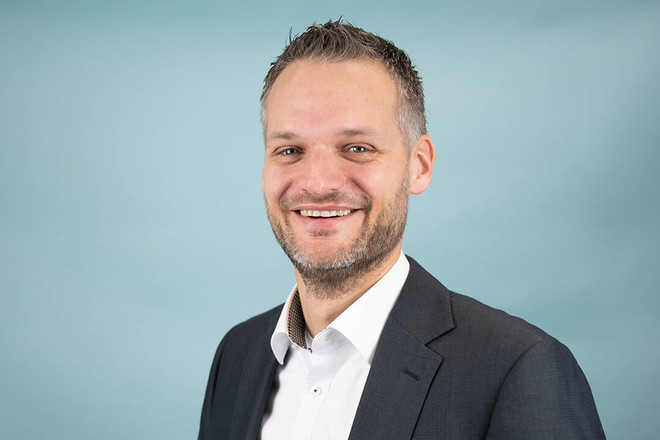Policy Impulse
Making it happen: Molecules from the Mediterranean – what’s needed for a European H2 infrastructure?
Germany’s hydrogen core grid has been approved and is already under construction. The first excavators have rolled in and the first pipes are being prepared for the switch from natural gas to hydrogen. And with the amortisation account to finance the German core grid, Germany is a pioneer in Europe. This is a great success. However, we cannot rest on our laurels, because in order to enable the necessary imports, investments in hydrogen corridors must also be secured across Europe.
For the energy transition to succeed, we need a reliable supply of hydrogen at competitive prices. Imports from countries in Europe can deliver both: in addition to excellent production conditions, they offer political and economic stability as well as proven and reliable cooperation. A Europe-wide hydrogen network means lower transport costs and makes Europe less dependent on energy imports.
On the Iberian Peninsula, for example, sun and wind provide a surplus of comparatively cheap green hydrogen. Up to 75% of Germany's demand could be covered in this way. Now the import corridors need to be built or converted and financed.
H2med, the Mediterranean corridor from south-western Europe
One of the most important import corridors for hydrogen is H2med, with a transmission capacity of two million tonnes per year. The Mediterranean corridor will run over 2,500 kilometres from Portugal and Spain, through France to Medelsheim in the German core grid. Together with Portugal's REN, Spain’s Enagas and Terega and NaTran (formerly GRTgaz) from France, the OGE team is developing this corridor.
To connect the existing grids in Portugal and Spain, a new pipeline is planned, the CelZa from Celorico da Beira to Zamora. It will be 248 kilometres long and will operate at a pressure of up to 100 bar. The new BarMar pipeline will run around 450 kilometres through the Mediterranean from Barcelona to Marseille, connecting the Spanish and French grids. It will transport hydrogen at an operating pressure of up to 210 bar. Construction of the corridor is scheduled to be completed in the early 2030s, with commercial operation starting then. Around 2.5 billion euros will have been invested in the two pipelines, CelZa and BarMar, by then, with a total of 10.7 billion euros for the entire hydrogen infrastructure of the corridor.
As these are key European projects, both have been classified as Projects of Common Interest (PCI) by the EU and are receiving funding from the EU's Connecting European Facility (CEF) programme.
The corridor could be fully utilised in the early 2030s
A non-binding market survey conducted in November showed the extent of the business community's interest in H2med. Nearly 170 companies participated with more than 500 projects. BarMar could already be operating at full capacity by the early 2030s.
To ensure this happens, a matchmaking platform will enable producers and consumers to get in touch with each other. In addition, 16 companies have currently joined forces to form an alliance to support the H2med corridor, and other companies are welcome to join.
The European hydrogen network needs solid financing
In order to build H2med and other planned import corridors, the financing of the import corridors must have a stable basis so that we can soon obtain hydrogen reliably. This is because we also have a chicken-and-egg problem with the import corridors: there are many interested buyers and producers of hydrogen, but they can only make binding commitments once they know the schedule and costs. Infrastructure operators, in turn, need to know the transport requirements of producers and consumers in order to make these commitments for their investments – in a market that does not yet exist. To solve the chicken-and-egg problem and rapidly advance the hydrogen ramp-up, gas grid operators need early certainty for their investments so that they can build and deploy the infrastructure.
According to a study by the Hydrogen Council, the proportion of FIDs made in Europe is significantly lower than in China (35%) or North America (15%), at 4% of projects. Europe needs to catch up and secure investments to make them attractive to the market. In Germany, this is being done through an amortisation account for infrastructure and subsidies for producers and consumers.
The German amortisation account solves the two biggest problems of the hydrogen ramp-up: Hydrogen grid operators receive interim financing so that they can make the H2 grid available at affordable tarifs right from the start. The high initial investments cannot be passed on to the first customers, because otherwise the grid tarifs would be extremely high at the beginning. An amortisation account ensures that the costs are spread over many years and offers transport customers long-term reliability and planning security.
The second problem is securing risks for investors. Transporting hydrogen to Germany requires an investment of several billion euros. And that in a market that is still in its early stages of development. In order to make the risk/return ratio attractive for investors, European investments must be secured, similar to the German amortisation account. Only through import corridors whose financing and utilisation risk are secured by the state can the German core grid be filled with sufficient hydrogen. Policymakers must therefore commit to securing investments so that the hydrogen ramp-up can succeed.
Quickly remove obstacles to financing
An important issue that needs to be clarified urgently by politicians in order to pave the way for the hydrogen ramp-up is cross-border cost allocation (CBCA). Put simply, the CBCA mechanism states that costs incurred in one place must be allocated to the place where the benefits arise. This applies to network operators.
In concrete terms, using the example of H2med, this means that if Germany imports hydrogen from the Iberian Peninsula and a French network operator invests in a French hydrogen network to enable transit, the French network operator can pass on part of the costs to the network operators in Germany.
Only if this mechanism is applied can the import projects receive CEF funding. The disadvantage of this is that if CBCA is applied, additional costs will be incurred by the German market for H2 imports from Europe. German network operators would have to add these costs to the network charges – however, these additional costs are not included in the German core grid. It is therefore urgently necessary to find an alternative solution for these cross-border costs, otherwise imports will lead to an unreasonable increase in costs and risks for German network operators. Risks for network operators must be mitigated.
CBCA currently is an additional risk for hydrogen network operators that must be mitigated. This is because no one can currently calculate the costs of transport through other European grids, as there are no reliable figures on the share of transit to Germany. France, for example, has announced in H2med’s CFI that it not only wants to transport hydrogen through its network, but also produce it itself and supply its own industry. The quantities involved can only be estimated at this stage.
The uncertainty surrounding these cross-border costs therefore still represents an obstacle to investment. A European solution such as an amortisation account is also necessary here to ensure that the H2 ramp-up is successful and that all European countries benefit.

